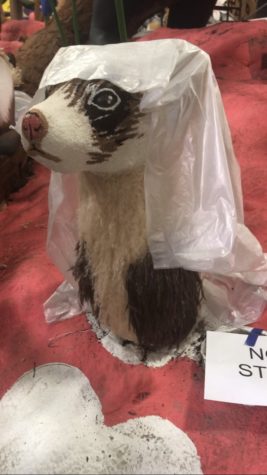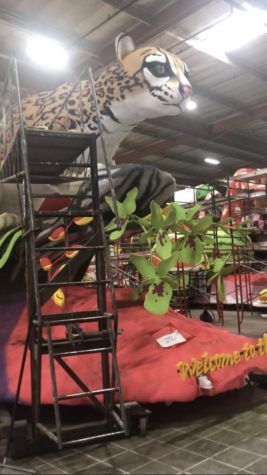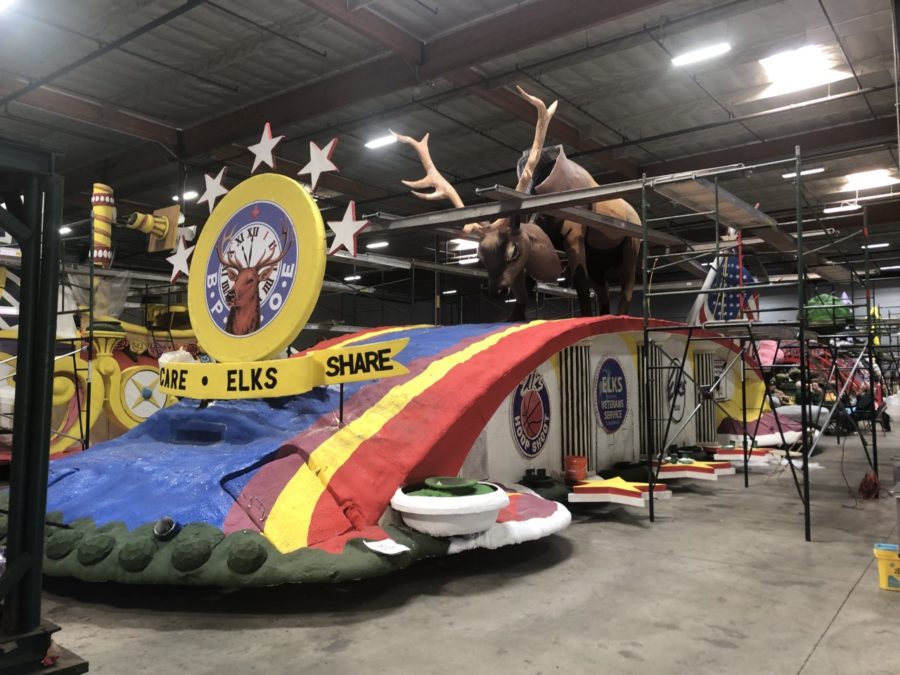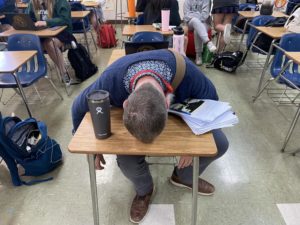What goes into making a Rose Bowl Parade float?
Photo credit Christina Vaughan ’26
The Elks’ float weeks into preparation.
January 5, 2023
On January 2, Americans everywhere enjoy the Rose Bowl Parade from couches, bleachers, and the streets of Pasadena. The 132 year-old celebration is an awe-inspiring mixture of huge floats, impressive marching bands, and horse drawn carriages, all adorned with nature’s most beautiful bounties.
The Rose Bowl Parade wouldn’t be possible without the hard work of thousands of volunteers. This year I was fortunate enough to be one of those volunteers, and I learned so much through this experience.
A few weeks ago I got to work on the Elks Lodge “Investing in our Communities” float: my brother and I got to make the flax-seed coat of Elroy the Elk.

Though it seemed easy at first glance, gluing on the seeds was surprisingly challenging. We had to do patches at a time, but we couldn’t let any of the seed drop and we had to overlap the patches so they were seamless, all while standing on shaky scaffolding.
My parents, on the other hand, had to glue beans onto the plaques on the side of the float. The lines had to be perfect and the beans were super small.
Working on Elroy was really challenging for me, and this experience revealed the massive scope of these projects and just how many thousands of people it takes to create the Rose Bowl Parade.
To properly understand the complexity of a parade float, one must begin with its construction. Companies or organizations that want to have a float meet with a design consultant from one of four main float-construction companies in Pasadena. Once the idea for the float is mapped out, the float’s “skeleton” is constructed from wood and metal wires.
After that, the “skeleton” is topped with a foam. The foam layer is then painted the color of what flower or dry material will go on that part of the float, so if something falls off, no one will notice. All floats must be covered solely in natural materials.

Dry materials may include rice, sesame seeds, beans, and an endless list of other items. These dry materials are ground to different consistencies to create different textures and can be put on weeks before the actual parade, whereas flowers must be put on only days before the parade.
Parade floats also undergo judging. The first is before the flowers go on, and the second is the final one. Leading up to the parade, the people who are actually on the float must practice getting in and out of the float under thirty seconds through hatches built into the float.
The person who drives the float sits in a little booth on the back of the float. They stay in a straight path by simply looking down and following the yellow line on the street.
Next time you watch the Rose Bowl Parade, remember that everything you see is made of an organic material and every little detail was carefully added on by a hard working volunteer.









Allison Lillestol • Jan 5, 2023 at 11:01 am
This is such a cool article!